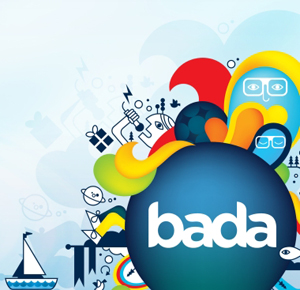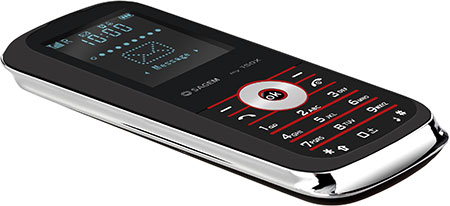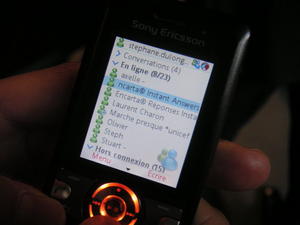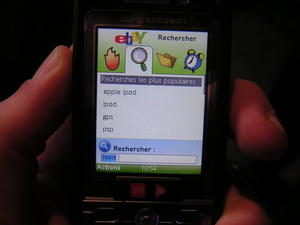Why Samsung Bada makes sense vs an Android-me-too journey
Thomas Menguy | December 28, 2009 Recently Samsung announced Bada, a new development environment: in a nutshell this is an SDK with a set of C/C++ API associated to an application framework, ported on top of Samsung legacy RTOS, or Linux.
Recently Samsung announced Bada, a new development environment: in a nutshell this is an SDK with a set of C/C++ API associated to an application framework, ported on top of Samsung legacy RTOS, or Linux.
Bada will be deployed in a majority of Samsung touch phones from smartphones to feature phones.
Antony has been quicker than me and posted a nice Bada article at Vision Mobile, depicting why this Samsung move may prove to be a wise one. I mostly agree with him, his arguments are around gross margins, market pressure and differentiation. I’ll try to dig a little more around this differentiation aspects in the Samsung case and why they really seem to innovate in this area, especially versus an Android strategy.
When Bada was announced, I was very negative, my first reactions and comments were harsh: again a me too initiative from Samsung, the OEM with fantastic execution but no clear vision of its services/software strategy, trying all the available OS on the planet and waiting to see if one is successful.
Then I’ve looked back at what they achieved recently and what they’ve announced with Bada.
- They are now the undisputed number 2 in number of devices sold (not far from 20% of the market in Q2 2009 for ex)
- The Touchwiz UI 3.0 is on the smartphones AND ALL the other touch phones of the company: difficult to tell who is or is not a smartphone now (I’ve made the experiment at the last CTIA).
- Release of the Touchwiz UI widget SDK to develop widgets for all the Touchwiz based phones.
What are they trying to do with this TouchWiz UI ?: use the best software platforms (RTOS for cost effectiveness and integration, high level OS for SDKs and features) while trying to uniformize the user experience and consolidate the Samsung brand.
Obviously the next step, to retain its customers, a politically way to say “lock them in”, is to have exclusive applications and services accross the Samsung devices line…even better if the customer has paid for it so he won’t throw away its application investments to buy a competitor phone for its next purchase. Same strategy as Apple, but here we are talking about Samsung a company with dozens if not hundreds of different device models, across all the price ranges, selling more than 200 millions phones a year (yes a year! how many iPhones sold today? ![]() , ok margins, blablabla…and yes I have an iPhone).
, ok margins, blablabla…and yes I have an iPhone).
How to do that? Make a robust application environment, OS agnostic, with a dedicated SDK, to allow deployment of the same binary to a range of devices with different software platforms … well this is exactly the description of Bada.
We (speaking in the name of OpenPlug in this sentence only) have advocated this very same idea for the last 7 years to push OEMs in this direction (Samsung and Nokia were part of the lot ![]() ), and this is at the end taking of : Nokia with Qt (still has to deliver but the intention is clear) and Samsung with Bada.
), and this is at the end taking of : Nokia with Qt (still has to deliver but the intention is clear) and Samsung with Bada.
But why creating a new one and not simply reuse Android code base?…I’m sure you have the answer already:
- Android is free? Android is by no extend free: you have to pay a lot of your R&D budget to make a phone with your brand, your services, etc…
- Android is open, why not getting it? NO Android is a closed box, Google and only Google can really change it, it’s really time for the industry to wake up: it’s not because you have the code of something that you can control it. If you don’t have the roadmap and the team who is maintaining and developing it you simply have meaningless mega bytes of symbols

- …but this is from Google, the good guys! Sorry, they are not, they are pushing their own services, not yours, and now with the NexusOne their own phone and user experience.
Google/Android has a complete opposite aim versus OEMs own agenda:
- Android is here to push Google services in the mobile world, as a corollary it allows you to swap your device as easily as possible because the new one will have all your data and applications loaded and compatible from the old one.
- … wait,wait this is exactly what an OEM doesn’t want: an OEM wants you to buy your next phone from them, not the competitor. So you have to differentiate.
Samsung, like Nokia, simply doesn’t want that an external third party software house decides if its devices has to be like that or like this… to be look alike brothers to its direct competitors (check the Windows Mobile phones for the last 5 years, and you will get the point : all the same).
So why not following their own path? Apple has made the choice and is successful, Nokia is trying, Samsung has to move, and for me it is doing so in a more pragmatic way than Nokia:
- Bada is not about reinventing a new OS with the underlying plumbing to the hardware as is Nokia Mameo, who cares of that today?
- The User Experience is already in production and refined device after device
- Bada SDK is not “fancy” but raw C/C++ … but what the point as long as I can sell and do my applications for hundred of millions of devices and customers (let the fun to the WebOS guys…I’ll get the cash)
Of course Bada is not quite their today, where are the devices? where is the market place? But it is refreshing to see Samsung taking its own path, its own direction…opening even more opportunities to application developers.


















